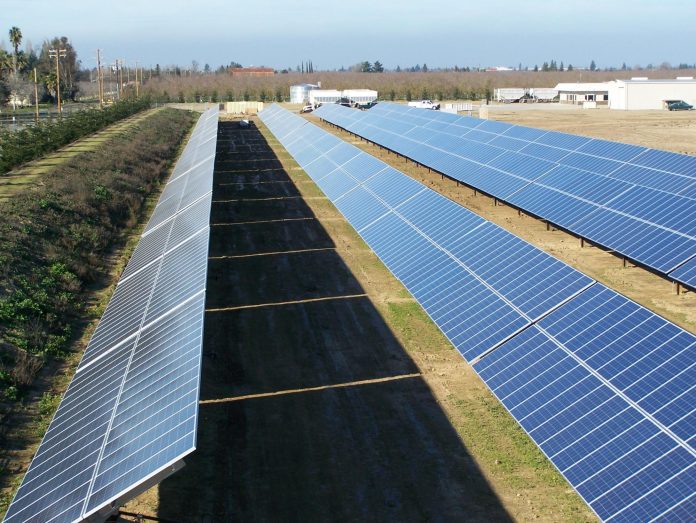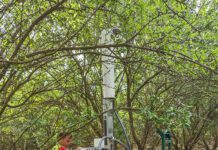
In what is considered to be good news for the agricultural industry, this past month, the California Public Utilities Commission (CPUC) announced the release of a new Proposed Decision (PD) for the Net Energy Metering Program, which they are now referring to as Net Billing Tariff (NEM 3.0) for all customers of PG&E, SCE and SDG&E who install solar after implementation.
The new Proposed Decision is in response to a CPUC study that looked at solar net energy metering. According to the CPUC study, “A review of the current net energy metering tariff, referred to as NEM 2.0, found that the tariff negatively impacts non-participating ratepayers; disproportionately harms low-income ratepayers; and is not cost-effective. This decision determines that the successor tariff should promote equity, inclusion, electrification and the adoption of solar paired with storage systems and provide a glide path so that the industry can sustainably transition from the current tariff to the successor tariff and from a predominantly stand-alone solar system tariff to one that promotes the adoption of solar systems paired with storage.”
To best understand the evolution of net energy metering, it is important to take a quick look back at how it began and where we are now.
NEM 1.0
In 1996, Senate Bill (SB) 656 (Alquist) established net energy metering in California, an electricity tariff-based billing created to “encourage private investment in renewable energy resources, stimulate in-state economic growth, enhance the continued diversification of California’s energy resource mix and reduce utility interconnection and administrative costs.” In the first net energy metering tariff, NEM 1.0, customer-generators received a full retail rate bill credit for power generated by their onsite systems that was fed back into the grid when generation exceeded onsite energy demand.
NEM 2.0
In 2013, Assembly Bill (AB) 327 (Perea) mandated that the CPUC adopt a replacement to the net energy metering tariff. “In NEM 2.0, customers continued to receive full retail rate credit for energy exported to the grid during a 12-month billing cycle as well as compensation for net surplus energy. However, NEM 2.0 customers are currently required to pay some charges that align their costs more closely with non-NEM customer costs.”
NEM 3.0
As indicated, the CPUC was under pressure by the utilities to address the subsidization of residential customers who the utilities allege “weren’t paying their fair share.” One group estimated this to be as much as $4 billion in costs that were shifted from solar customers to non-solar customers. The Proposed decision states, “these changes will help meet California’s climate goals and increase reliability while promoting affordability across all income levels.” This newly released Proposed Decision builds off the current NEM 2.0. The following is a summary of some of the key points:
Annual True Up
The Proposed Decision maintains an annual true-up, which was one of the most critical issues to be resolved. Currently, NEM 2.0 customers receive a monthly bill and, if the customer generates more bill credits than they use during that month, they can carry forward the excess credits to the following months, within a 12-month period based on the customer’s interconnection date. This is considered the annual true-up and remains in the Proposed Decision for NEM 3.0. Initially, the utilities had proposed to go to a monthly true-up, which would have negated any true benefit for agricultural operations like hullers and processors that create the peak energy during the bright summer days but use the most energy in the fall and winter. The revised PD protects this.
Tariffs
The Proposed Decision proposes no changes to the previous NEM 1.0 or NEM 2.0 tariffs. Existing customers will remain on the existing tariffs as long as they do not significantly add to the existing project for 20 years from their initial interconnection date.
“The Commission reiterates here that all consumer protection efforts initiated for prior net energy metering customers will continue for future customers taking service under the Net Billing tariff.”
Credits
The Proposed Decision proposes for non-residential customers to get credited for excess power based on the avoided cost calculator (ACC). This rate will be approximately between $0.06-$0.08/kWh. Projects that have an energy storage component, such as a battery, will get a higher compensation rate.
“This decision also clarifies that a customer currently taking service under NEM 2.0 may add battery storage to their existing distributed generation system without altering their NEM 2.0 status.”
Aggregation Program
The Proposed Decision proposes no changes to the NEM Aggregation program. This is another win for agriculture as the utilities have wanted to eliminate it.
Timeline
The NEM 3.0 start date is a little unclear. A customer can take service under the NEM 2.0 program if they submit an interconnection application no later than 120 days after the adoption of this decision. The interconnection application date is defined as the submission date of an application that is free of major deficiencies.
It’s important to note that this is a proposed decision, not a final one. The Proposed Decision can be voted on by the Commissioners as early as December 15, 2022. If this timeline holds, the new version of NEM could be implemented for people as soon as April 2023. If you are already under NEM 1.0 or 2.0, this Proposed Decision does not change anything for you. Existing customers are grandfathered in either NEM 1.0 or 2.0 for 20 years after their interconnection date.
All in all, this is a good decision for agricultural operations like tree nut hullers and processors and is why we have worked hard as members of the Ag Energy Consumers Association (AECA) to preserve it. In a state that cares nothing about the soaring cost of electricity and the debilitating impact it has on the industry, we need every opportunity we can to avoid or minimize these costs. Solar has been good for agricultural operations, especially tree nut hullers and processors, and we need to keep it that way.










